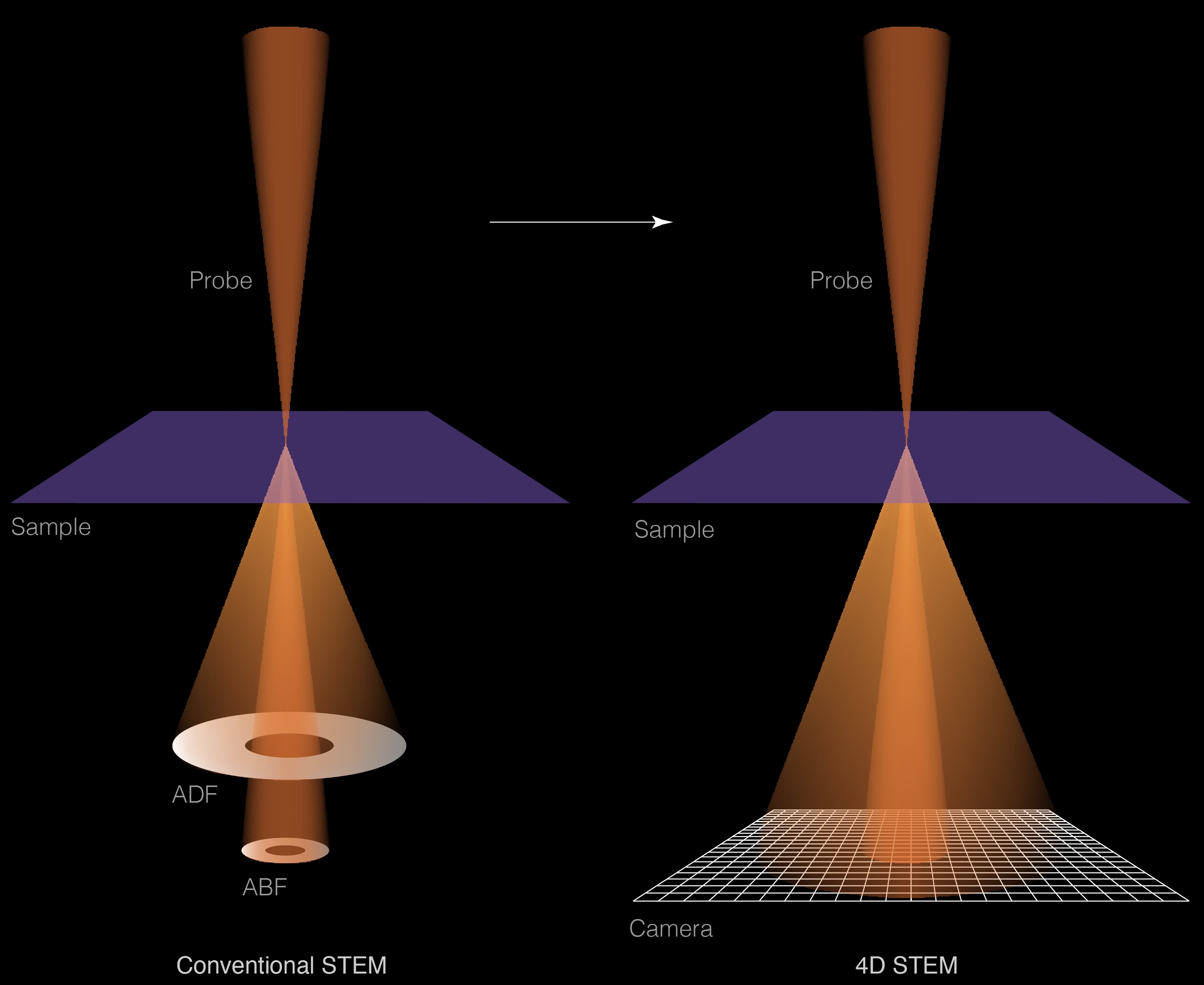4D STEM
 In the past each STEM signal had to come from a detector which summed the electron scattering over a given angular range with a combination of a scintilator and photomultiplier.
In the past each STEM signal had to come from a detector which summed the electron scattering over a given angular range with a combination of a scintilator and photomultiplier.
In 4D STEM a camera records a 2D image of the scattering at each probe position in the 2D STEM scan, thus building a 4D dataset from which any conventional integrating signal can be constructed.
The 4D dataset allows far more sophisticated analysis however, enabling both measurement of the probe position dependence of the center of mass (CoM) of scattering and ptychography to be performed.